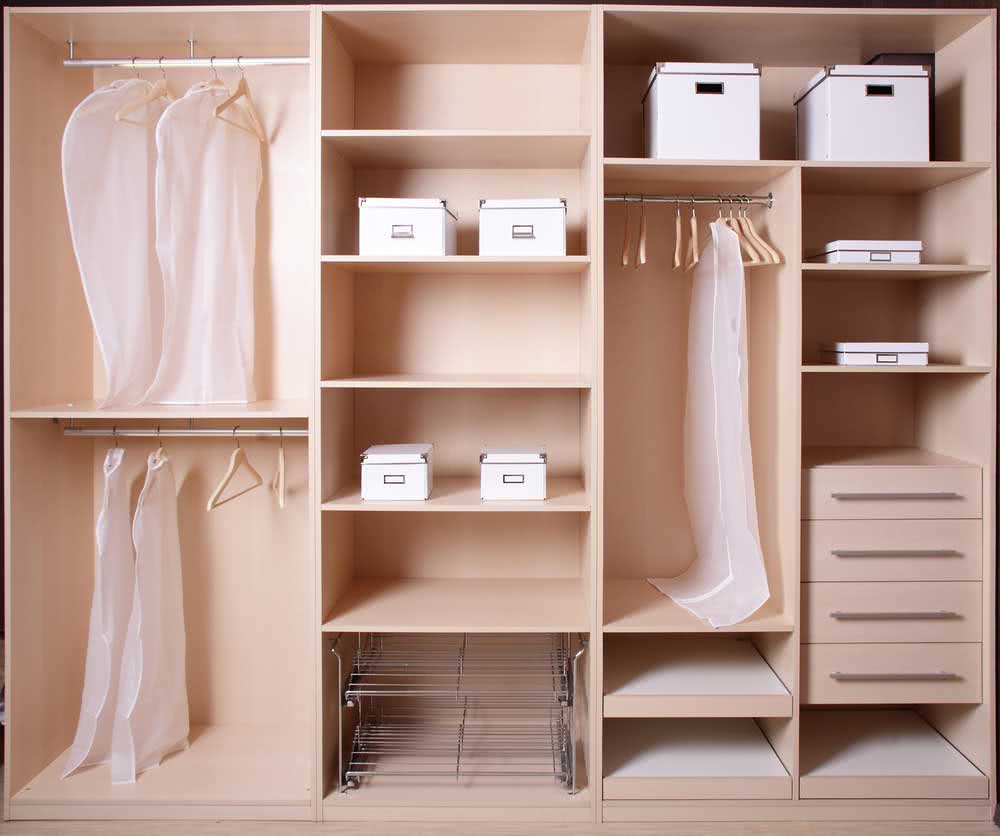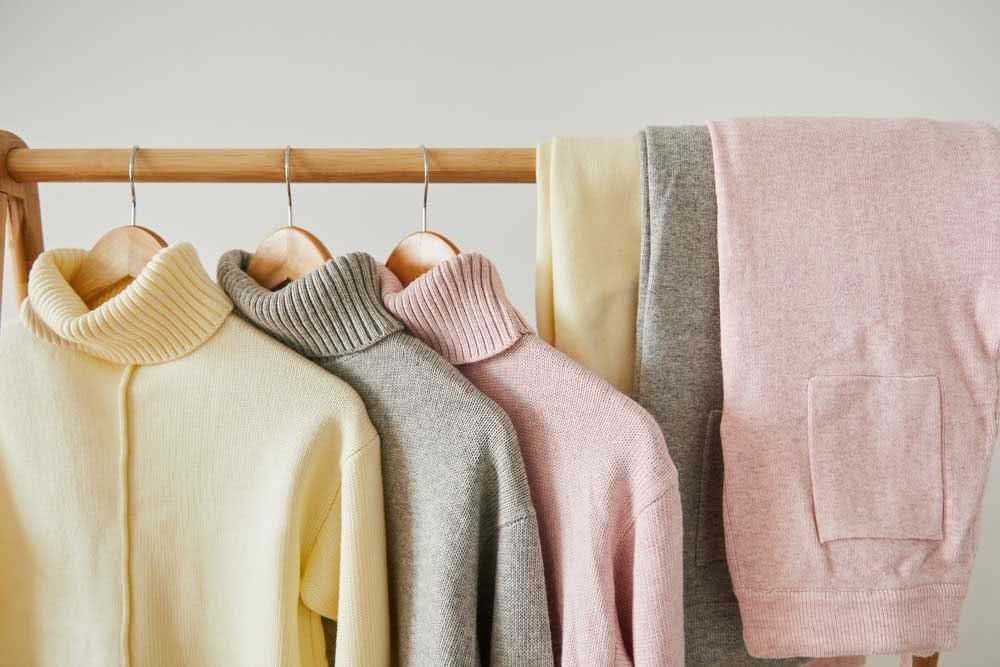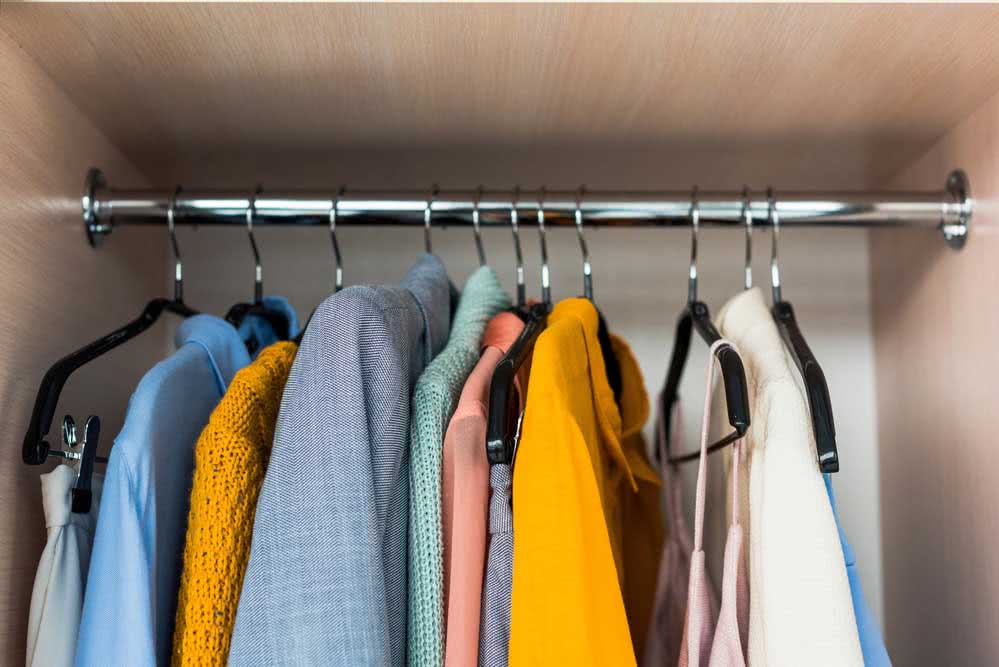Nobody deserves to discover a moldy piece in the wardrobe. In addition to the bad smell, mold can end up spoiling clothes and even the closet.
But luckily, there are tricks that put a stop to mold in the wardrobe and, furthermore, they still help to put this inconvenience far away.
Want to know more? So stick here in this post that we tell you. Come and see! Did you find mold on the clothes too? Then see in this guide how to do it yourself.
Difference between mold and mildew

Believe it or not, mold and mildew are not the same. And understanding the difference between them will make all the difference when it comes to cleaning your wardrobe.
Both are microorganisms caused by fungi, however, the mold attacks only the surfaces of the objects and its main characteristic is the grayish tone and the velvety texture. Mold is also easy to clean, just wipe with a damp cloth and you’re done.
Mold is a little more complicated. It attacks objects more deeply and has the ability to penetrate fibers, causing stains that are more difficult to remove.
Mold is characterized by black dots on the surfaces of furniture, objects and fabrics.
So when you notice gray spots, know that you are dealing with a problem that, fortunately, is easier and faster to remove. Now, if what you’re seeing are black dots, then set aside a heavier cleaning arsenal.
How to remove mold from the wardrobe

The first thing you should do when you encounter a mold stain is to clean it immediately.
That’s because mold is a micro-organism capable of multiplying, that is, if you don’t take care of that tiny spot, it will soon become giant.
Therefore, write down all the necessary procedures to remove mold from the wardrobe:
- Start by opening the wardrobe and removing everything inside: clothes, shoes, accessories, boxes and so on.
- Then, spread your things on the bed so they can ventilate. If possible, give preference to spread the clothes on the clothesline so that they get a little sun. The same goes for shoes and other accessories, the more exposing your pieces to the sun, the better.
- This is because the heat of the sun helps to remove moisture (a necessary condition for the proliferation of mold and mildew) and to remove the bad smell from the pieces.
- While your clothes take a little sun, take the time to clean inside the closet.
- You can even place your wardrobe’s mobile drawers and shelves for sunbathing. So cleaning is more efficient.
- Then start analyzing the types of stains you have in your closet. If you notice that it is moldy, then a cloth moistened with water and vinegar is enough.
- Make a mixture from a glass of water to a glass of vinegar. Pass this mixture through the entire cabinet, including drawers, doors and the bottom of the furniture. Also remember to clean the top of the wardrobe and all the outside, including the back.
- But an important detail: observe the wall where the wardrobe is leaning. It may be that your furniture is absorbing the moisture that comes from the wall, in which case, if the source of the problem is not resolved, there is little point in cleaning only the cabinet.
- Enjoy and remove the wardrobe from the wall about five centimeters. This way, you favor ventilation behind the furniture.
Continuing with cleaning
- If you notice the presence of black spots on the furniture, then you are facing a mold stain.
- The solution in this case is to use bleach. But never use the pure product without being diluted, it can stain your furniture.
- Mix with a measure of bleach for a measure of water, you can take as a reference a glass for each product.
- Then, moisten a cloth and wipe all over the furniture, rubbing the mold stains.
- Leave the wardrobe open until it dries completely.
Tip: if the cabinet has a lot of mold and mildew stains, use a mask to clean it, this way you avoid allergic attacks from fungi.
Now it’s time to take care of your clothes.
How to get mold out of clothes

This is a delicate step and will require you to carefully analyze all the parts of your closet, from clothes to shoes, accessories, blankets, towels, sheets, etc.
No mold or mold stain should be returned to the cabinet before it is properly cleaned and sanitized. Otherwise, you run the risk of suffering again with mold in the wardrobe.
So watch item by item. Smell the pieces too. You may not see any visible mold or mildew stains, but if you feel that unpleasant odor on your clothes then separate them for washing.
Then form piles with the clothes that will need to be sanitized. White mold-stained clothes can be cleaned with bleach. To do this, soak them in water and add about half a glass of bleach.
Colored clothes cannot be washed with bleach or bleach. The tip in this case is to use vinegar to remove mold stains. Soak the pieces in water and vinegar and then wash them normally.
The same goes for blankets, towels and sheets.
How to prevent mold in the wardrobe
After all the work to get the mold out of the wardrobe you don’t want it to come back do you?
So check out the tips we’ve set aside for you to be free of this hassle once and for all.
- Keep your wardrobe doors open every day for at least 20 minutes. This helps to renew the air inside the cabinet and prevent moisture from accumulating.
- On the coldest and humid days of the year, try to increase the ventilation time of the wardrobe, since in these times the proliferation of mold and mildew is greater because of the accumulation of moisture.
- Never store damp clothes in your closet. Wait for them to dry completely before storing them.
- The same goes for the clothes you just ironed. The steam from the iron leaves the pieces moist, so it is important to wait for the clothes to cool before placing them in the closet.
- Also, do not keep the clothes and shoes you have just removed from your body. Sweat can end up making your clothes mold. If they still have conditions of use, wait a while for the parts to ventilate and dry. Instead, put it to wash.
- Get used to the idea of periodic cleaning your wardrobe. Every two or three months is ideal. Use water with vinegar or water with alcohol to remove dust and possible mold stains that are beginning to proliferate.
- Spread pieces of chalk or plaster on your wardrobe. These materials help to draw moisture and, consequently, prevent the appearance of mold and mildew.
- You can also choose to use those anti-mold balls sold in supermarkets. The effect is the same, just remember to replace these products every six months.
- Keep coats, blankets and party clothes that you hardly use in TNT bags. This way the pieces are protected from mold. The tip also applies to shoes and other accessories, such as hats and bags, for example.
- But at all costs, avoid storing clothes, shoes and accessories in plastic bags. This is because this type of material does not allow the pieces to “transpire” and may end up accumulating moisture inside, favoring the appearance of mold and mildew stains.
- The clothes that hang on hangers are the ones that ventilate the most, since they are open. But still try to keep a distance of at least two centimeters between one piece and another. Avoid stuffing the macaw with too many clothes.
- The pieces on shelves, niches and drawers must be kept folded and organized. Form stacks and keep each stack two to three centimeters apart.
- With the cleaning completed, place aromatic sachets inside the wardrobe. This is a great way to make the closet more fragrant and put an end to any musty odor that may be left over.
- And don’t forget to check the condition of the walls, ceiling and floor of your home. If you notice the presence of infiltration and moisture stains, have it repaired immediately and leave the cabinet as far away from these points as possible to prevent mold growth.
See how simple it is to get mold out of your wardrobe? Now just roll up your sleeves and do the necessary cleaning.



